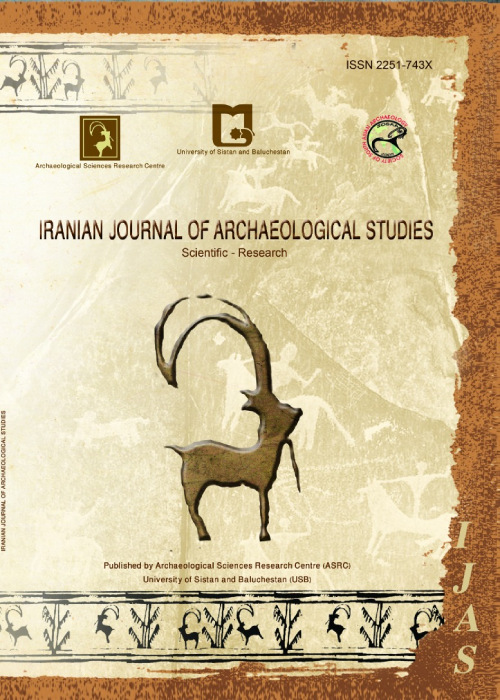Cultural Interactions between the Sistan Basin and the Bampur Valley:Grey Wares Characterization in Question During the 3rd Millennium BCE
Author(s):
Article Type:
Research/Original Article (دارای رتبه معتبر)
Abstract:
During the third Millennium BCE, grey wares were the most popular wares in the Indo-Iranian borderlands inwhich the Bampur Valley and the Sistan basin played a significant role. This research aims to compare grey waresof the above-mentioned regions in order to have a better understanding of possible cultural similarities in bothregions. Similarities between grey wares of the regions at the issue have been frequently explained in the light ofthe long-distance trade mechanism, and considered as a result of the (intentional or unintentional) exchange ofpottery techniques and design styles through commercial activities. Eighteen Grey ceramic sherds were sampledat Tepe Bampur and Shahr-i Sokhta, two key-sites, which are respectively located in the Bampur Valley and theSistan Basin. To compare the raw materials of the ceramic samples after their analyses, some clay samples were alsocollected from two specific natural clay deposits, located 10 km north and 45 km south of Shahr-i Sokhta, and fromthe bank and riverbed of the Bampur River. In addition, a clay sample was also collected from a clay deposit in thePirgel region, located 100 km north of Tepe Bampur and 300 km southwest of Shahr-i Sokhta. By means of XRFtechniques, it was attempted to compare different elements of the ceramic and soil samples. The results show thatthere are close similarities between the chemical elements of the grey wares collected at Shahr-i Sokhta and TepeBampur and soil samples from the Bampur Valley and the Pirgel region. Although these similarities are not seenwith soil samples of the Sistan Basin, the grey wares of these two sites were completely similar. Finally, it can bestated that the fine grey wares of the Sistan Basin were not locally manufactured but were probably imported fromthe Bampur Valley and other regions through long-distance trade during the third millennium BCE.
Keywords:
Language:
English
Published:
Iranian Journal of Archaeological Studies, Volume:11 Issue: 1, Winter and Spring 2021
Pages:
113 to 122
magiran.com/p2420178
دانلود و مطالعه متن این مقاله با یکی از روشهای زیر امکان پذیر است:
اشتراک شخصی
با عضویت و پرداخت آنلاین حق اشتراک یکساله به مبلغ 1,390,000ريال میتوانید 70 عنوان مطلب دانلود کنید!
اشتراک سازمانی
به کتابخانه دانشگاه یا محل کار خود پیشنهاد کنید تا اشتراک سازمانی این پایگاه را برای دسترسی نامحدود همه کاربران به متن مطالب تهیه نمایند!
توجه!
- حق عضویت دریافتی صرف حمایت از نشریات عضو و نگهداری، تکمیل و توسعه مگیران میشود.
- پرداخت حق اشتراک و دانلود مقالات اجازه بازنشر آن در سایر رسانههای چاپی و دیجیتال را به کاربر نمیدهد.
In order to view content subscription is required
Personal subscription
Subscribe magiran.com for 70 € euros via PayPal and download 70 articles during a year.
Organization subscription
Please contact us to subscribe your university or library for unlimited access!


